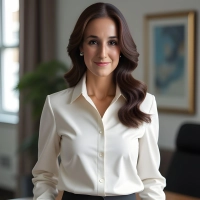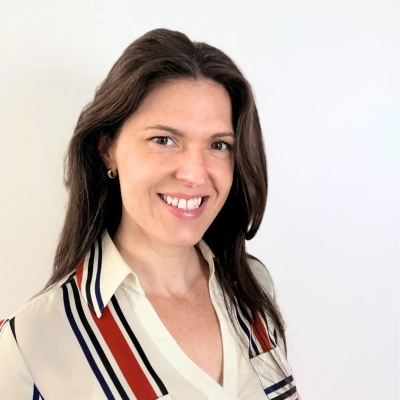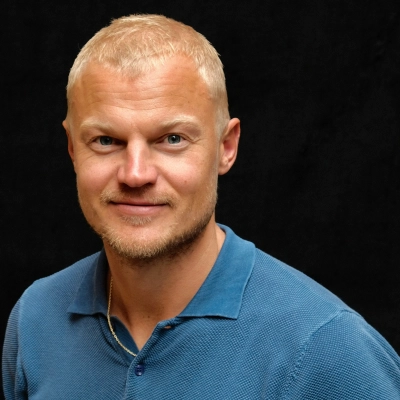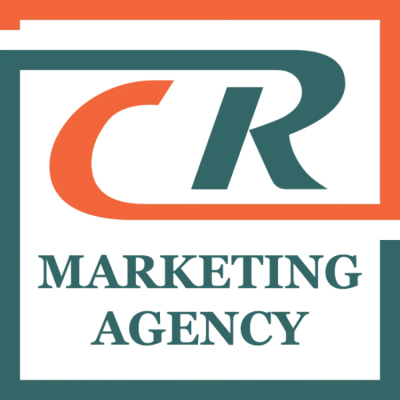25 Ways to Execute Marketing Strategies with Severe Resource Constraints"
Marketing success doesn't always require massive budgets, as industry experts reveal practical strategies for resource-constrained teams. This article presents 25 actionable techniques that maximize impact while minimizing expenditure, from prioritizing core tasks to transforming single content pieces into multiple assets. Business leaders and marketing professionals will discover proven methods to maintain brand presence and drive results despite limited resources.
Prioritize Core Tasks When Resources Are Limited
We had a launch where two critical people (responsible for around 40% of the workload) got sick overnight. It was the kind of curveball that makes you consider pulling the plug... but postponing wasn't an option. Too many moving parts, too many stakeholders already aligned, marketing materials sent... so canceling would have undone weeks of preparation.
The first thing we did was cut the plan down to its core. What absolutely HAD TO happen for the launch to go out? Anything that was "nice to have" was parked. That clarity gave us room to breathe.
Then we looked at what we already had. Instead of creating fresh assets from scratch, we repurposed content that had worked in earlier campaigns and reframed it for this one. That shaved hours off production. We leaned harder on automation for emails and scheduling, which meant we could spend our time on the parts that couldn't run on autopilot. And we borrowed help from two colleagues in different teams and broke tasks into tiny, manageable pieces so they could jump in without needing full context.
The process wasn't perfect. We were stretched thin, and some details had to wait until after launch; but the essentials went live on schedule. What surprised us was how well it performed. The recycled assets pulled in more engagement than expected, and the stripped-down version of the campaign was actually sharper than the original.
Looking back, the crisis forced us to be ruthless about priorities. It reminded us that good marketing is all about doing the few things that really matter, when it counts.
Create Recyclable Graphics for Consistent Brand Presence
When our company needed to maintain an active social media presence despite having a small marketing team, we faced significant time constraints that threatened our online visibility. I decided to bring on a freelance graphic designer who specialized in creating custom, brand-aligned visuals that perfectly matched our company aesthetic. The freelancer developed a library of pre-made, recyclable graphics that our team could quickly customize and deploy across various platforms without requiring extensive design work for each post. This approach not only saved us countless hours but also ensured our content remained visually consistent and on-trend. The solution allowed us to punch above our weight in the digital space while keeping costs manageable and freeing up our internal team to focus on strategy rather than execution. Looking back, this experience taught me that resource constraints often lead to more sustainable and efficient processes when you're willing to rethink traditional approaches.

Transform Client Conversations into Valuable Research
When facing limited resources, we couldn't afford large-scale research or paid studies. Instead, we leveraged our existing relationships: every year we interview our clients and other industry leaders to compile an annual trends report in highly niche markets such as event ticketing, prepaid cards, and expense management - areas where original data is hard to find. By building on conversations we were already having, we created research that feels exclusive and directly relevant.
We distribute it through our newsletter and paid social media. Our community values it because it provides competitor insights and market direction without the cost of doing that research themselves. At the same time, it nurtures our clients and leads by showing that we value their business enough to feature their voices as sources in the report.

Exchange Free Audits for Qualified Leads
During a cash-flow crunch, we couldn't afford paid advertising but needed leads. We created a "Marketing Audit Exchange" program where we provided free 15-minute website audits in exchange for social media shares and email addresses. We automated the audit process using AI tools, so it scaled without manual work. The program generated 200 qualified leads in 30 days with zero ad spend. The creative element was positioning the audit as valuable content rather than a lead magnet, which increased participation rates and created genuine value for prospects.
Leverage Community Channels Instead of Paid Media
One of the most challenging moments I faced was launching a campaign with virtually no budget and only a skeleton team to execute it. The business needed traction fast, but the reality was that traditional paid channels were off the table. Instead of seeing the constraint as a limitation, I reframed it as an opportunity to test how far creativity and scrappiness could go.
The solution was to double down on earned and community-driven media. We mapped out where our target audience was already gathering—niche online communities, industry forums, and social groups—and built tailored content specifically for those spaces. Instead of polished ad creative, we used lightweight assets—short videos, founder-led posts, and customer stories—that felt authentic in those environments. To amplify reach, we activated a small but loyal group of early adopters, equipping them with shareable snippets and incentives to spread the word organically.
We also leaned heavily into partnerships. By collaborating with complementary brands and thought leaders, we were able to piggyback on established audiences without spending on distribution. For example, instead of hosting a large event, we co-hosted webinars with partners who already had credibility and reach in the space. That gave us visibility at a fraction of the cost while positioning the brand alongside trusted voices.
The outcome was striking. Engagement rates outperformed previous paid campaigns, inbound leads spiked, and the cost per acquisition dropped to almost zero. But the bigger win was cultural—it showed the team that resource constraints can actually unlock sharper thinking and more agile execution. When the budget eventually returned, we carried those scrappy habits forward, which made every dollar go further.
The lesson I'd share with other marketers is simple: constraints don't kill strategy, they refine it. By focusing on relevance, authenticity, and partnerships, you can achieve outsized impact even when resources are thin. Sometimes the most creative campaigns are born out of necessity, not abundance.
Reward Customers with Driving Credit for Help
I started a global branding and digital marketing firm 24 years ago in Cambridge, MA but years before when I joined Zipcar as the first head of marketing we were raising money and had no budget so I had to be very scrappy and resourceful to find people to sign up and got good at guerrilla marketing. I did not have money to hire people either so I offered the only currency I had to our members, free driving credit for every hour they would help me by attending street fairs and festivals standing next to one of our cars decorated with helium balloons passing out free postcards I got printed online offering free trial memberships to join. I had an army of folks who wanted to help us succeed and they ended up working enough hours each month to drive for free by helping us grow. We had cars popping up at events all over town!
Chipotle was famous early on with being very scrappy, creative and resourceful with their coupons napkins, cups, etc. printed with marketing messages and fun facts. I think you can still find their coupon coins for free burritos on eBay! I am also a big fan of Content Marketing when your budget is tight. Start by refreshing existing content, it's no longer only about churning out fresh material, refreshing existing content from prior years you not only maximize your previous investment but the traffic drives the rankings too. Repurpose/reuse for best results, what's old can be new again. There are a lot of ways to repurpose content by turning a series of articles/blog postings/newsletters into a book/e-books then turning every piece of content into a tweet and share links to the content on all your social media platforms. Turn articles into infographics and video your talks to share over social media. Once you have a piece you are happy with get as much mileage out of it as possible. There are so many media outlets today looking for fresh content so find creative ways to leverage your thought leadership pieces so that your audience finds you easily. Even though you may think your content is already out there chances are no one is sick of reading it yet trust me.

Transform One Content Piece into Multiple Assets
This occurs more frequently than I care to contemplate. Many companies overstate marketing spending when they require professional assistance, but when you pull back the curtain you find that the vast majority of spending is on items which cannot be redirected, or, worse still, simply does not exists.
Most important with any marketing strategy under budgetary constraint is to break out of thinking in terms of spend alone and think about what can be achieved for zero or minimal cost. That's where efficiency and creative thinking really enter the mix. One of my favorites is one that I like to refer to as "One to Many".
It is a content creation process that can be undertaken by nearly any business. You begin with one fundamental piece of content, ideally, a video. From a single video, you can produce the audio to be used in a podcast, turn the transcript into a blog post, turn the copy into an email marketing campaign and then break it down into concise takeaways for social media updates.
The magic of this method is twofold. One, it's so darn effective. You're not beginning from zero each time you need content, you're reworking and re-purposing your existing content. Two, it reinforces your message. Wherever a potential customer encounters your company, on social media, email, or your site, they're receiving and hearing the same consistent message. That repetition constructs trust, credibility and familiarity without requiring an enormous budget.
In short, resource limitations don't need to stifle results. With the correct approach, they can instead compel smarter, thinner and superior marketing.

Build Visibility Through Earned Media Partnerships
I've been in plenty of situations where resources were razor-thin, but one that stands out was an early stage of FemFounder. We didn't have a big ad budget, so I leaned into what I knew best: PR and scrappy digital strategy. Instead of running paid campaigns, I built a visibility engine using earned media, partnerships, and micro-content. I repurposed every press hit into blog posts, email content, and social clips so one piece of coverage had a dozen touchpoints.
That constraint forced me to be more creative. I also created "micro frameworks" — tiny, actionable tools packaged into free downloads — which cost little more than my time to design but brought in thousands of new subscribers. That experience reinforced for me that constraints can actually sharpen strategy: they push you to focus on amplification, creativity, and consistency instead of burning through budget.

Turn Product Packaging into Shareable Social Content
When I started Summit Breeze Tea, its marketing budget was literally the price of a quality boba beverage—tightly, I dare say. I could neither hire an entire creative team nor pay for ads, so I exploited what I had: a cell phone camera, an established loyal customer base, and far too much tea (literally).
The creative solution? I converted product packaging as shareable content. To every order was sent a handwritten letter and QR code that linked back to a brief "behind-the-leaf" story tips on steeping, moving background on sourcing, or yes, a groaner tea pun. Customers began sharing these on social media without being asked. I'd retweet their posts, give shoutouts, and gently create a cycle of community-driven content that cost no money but consideration.
It wasn't glamorous, but it worked. Traffic rose. Repeat business grew. And most importantly, the brand began to feel like a conversation, not a broadcast message. That's the power of constraint—it compels creativity to stop overthinking and begin stewing something human.
---
I hope this helps! If you want to get to know more details about me, please feel free to reach out below:
Name: Chris Lin
Title: Founder
My Website: https://summitbreezetea.com/
My LinkedIn: https://www.linkedin.com/in/chris-lin-42374a321/?locale=en_US
Headshot: https://drive.google.com/file/d/1rtdnr580gi5uvZwG8BTwG15GHc97njjK/view?usp=drive_link

Protect Momentum by Focusing on Core Markets
In my last CMO role at a global IIoT solution provider I had to deliver growth with far fewer resources than the situation really demanded. After the company was divested from a larger group our marketing budget sat at around three percent of revenue. To achieve the double-digit growth targets we had been set we would normally have needed closer to six percent. The same challenge returned during COVID when our customers were under pressure, delaying purchases and disrupting normal buying patterns.
I approached both situations in the same way. The first step was to rationalise the martech stack. We kept only the tools that genuinely saved time or made the team more effective. Everything else was cut to reduce expense but without leaving gaps in capability.
The second step was to narrow our focus. We concentrated on the core market that generated the majority of our revenue and on one next-horizon market we were working to establish. That way we stayed front of mind with existing customers while also keeping the future pipeline warm. Cutting investment in that next market might have helped in the short term but it would have hurt us in the years ahead.
The third step was to change how we spent. We pulled back from big, costly activities like multi-day trade shows and doubled down on more efficient channels such as social, SEO, and webinars.
The most important principle was to protect momentum. Making an across-the-board cut of twenty percent would have meant every market saw less of us and our visibility would have faded. By focusing our resources we kept activity levels high where it mattered most and had the flexibility to reintroduce adjacent markets when conditions improved. In my experience momentum is the hardest thing to recover once it is lost, so keeping it alive was the real measure of success.

Connect Through Personal Outreach Not Mass Advertising
Early in the days of Nerdigital, I had to execute a marketing strategy with almost no budget. We were in that familiar startup phase where every dollar was being scrutinized, and yet we still needed visibility. Paid ads were out of the question, and big sponsorships were unrealistic. What we did have, though, was time, creativity, and a willingness to do things differently.
Instead of focusing on traditional campaigns, I suggested we launch what I called "micro-storytelling." We leaned heavily on LinkedIn and industry-specific forums, creating thoughtful content around problems our audience faced rather than polished ads. I personally reached out to potential clients with tailored insights—sometimes just a few paragraphs of analysis on their current marketing approach and where I saw opportunities. It wasn't scalable in the traditional sense, but it was personal and impactful.
One example still sticks with me. I noticed a mid-sized e-commerce brand struggling with high cart abandonment. Instead of pitching them cold, I wrote a short breakdown of how a few tweaks in their email automation could lift conversions. I didn't sell them a service—I gave them value upfront. That gesture turned into a conversation, which eventually became one of our first retainer clients.
The creative solution here wasn't about technology—it was about reframing constraints as an opportunity to go deeper instead of wider. When you don't have the resources to blast your message, you're forced to connect more authentically. In hindsight, that period shaped our culture at Nerdigital. Even now, with more resources, we still try to carry that spirit into campaigns—balancing efficiency with personalization.
What I learned is that resource constraints can actually sharpen your creativity. They force you to strip away the noise and focus on what really matters: making genuine connections, solving real problems, and letting your work speak louder than your budget.

Place Branded Repair Stations at Popular Cafes
A tiny budget isn't a handicap, it's a filter for creativity.
I remember working with a fantastic, high-end bicycle repair shop. They had great mechanics but a near-zero budget, trying to compete with bigger well-known stores in the region. The temptation was to waste their tiny marketing budget on forgettable local ads their competitors were running as well. Instead, we decided to stop INTERRUPTING what people were interested in and BECOME what people were interested in.
We identified the top local cafes where cycling groups typically gathered. And (as a collaborative effort) we organized beautifully branded bike repair stations, complete with high-quality pumps and tools, and placed them right in front of the cafes - for any cyclist to use free of charge.
This wasn't just a nice gesture, it was a psychological long-term play. It triggered a powerful sense of reciprocity, that feeling of indebtedness you get from an unsolicited gift.
Every time a cyclist fixed a flat tire or tightened their chain, they had a positive, memorable interaction with our brand. This repeat exposure built familiarity and trust, positioning the bike shop as a helpful expert, not just another retailer, and the cafe as a trusted friend of all cyclists. It's the perfect example of being strategically distinctive to get remembered (for both parties involved).
The result? Foot traffic more than doubled in three months, all for the cost of a few tool kits (roughly 350$ each that last 2-3 years with minor upkeep). The big stores were buying ads, but we were buying goodwill, which has a much better ROI. You don't always need a bigger budget, you just need a better blueprint.

Hack Together No-Code Solutions Without Developers
At a startup I advised, we had to roll out a referral program in under two weeks with no dev bandwidth and zero budget for new tools. The obvious route, custom code, wasn't possible. Instead, the product manager and one junior dev hacked it together with Airtable + Zapier + Typeform as the 'backend.' It looked almost invisible to users but functioned well enough to track invites, send discount codes, and log redemptions. That duct-tape MVP drove a 28% spike in signups before we ever wrote a single line of production code. Constraint forced the team to think like creators, not coders: ship the story first, perfect the stack later.

Rotate Marketing Focus Monthly Across Different Channels
We worked with a client who launched a superfoods brand focused on detox, weight management, and metabolism support. She was new to the market and operating on a very limited budget, so investing heavily in one channel was not realistic. Instead of forcing a single approach, we designed a flexible strategy where each month we rotated focus across different areas.
The first month, we prioritized SEO and content creation; the next, we tested small paid ad campaigns, followed by social media pushes, offline marketing, and participation in wellness events and conferences. By spreading efforts strategically, we kept costs manageable while continuously testing which channels drove the most traction.
Over time, this rolling approach proved to be the best fit for her situation. It gave the brand visibility across multiple touchpoints, created steady growth, and allowed her to scale with confidence once revenue started to build.

Cut Awareness Channels to Focus on ROI
I had to run a campaign on $12000 when the plan was built for $25000. So I cut awareness channels and focused only on ROI driven ones like paid search, retargeting, and targeted SEO fixes. Because of that, even with half the budget, the campaign kept lead volume close to the original forecast.
The creative solution was reusing assets I already had. Old blog posts became landing pages. Data from reports turned into LinkedIn posts. Email was used to re engage past leads. That reactivation email alone drove about 20 percent of the conversions and cost almost nothing to send.
It worked because I focused spend closest to revenue and paused anything that needed a long runway. So every dollar stretched further, and the campaign still delivered results that made sense to leadership.

Use Customer Photos to Build Social Proof
I once had to execute a marketing strategy for a local roofing business with severe resource constraints. We had a very limited budget, a small team, and little room for paid advertising. Despite these challenges, I was able to come up with a creative solution by focusing on organic growth and leveraging existing assets in unconventional ways.
Utilizing Social Proof: We didn't have the budget for professional photos or videos, so I used customer testimonials, before-and-after pictures of completed projects, and short video clips filmed with a smartphone to showcase our work. We then posted these on social media and the website, creating an authentic and relatable connection with potential customers.
Content Marketing with SEO Focus: I focused heavily on content marketing by writing SEO-optimized blog posts and how-to guides on roofing-related topics (e.g., "How to Spot Roof Damage Before It Becomes a Problem"). These were designed to answer common questions from homeowners in the area, positioning us as a helpful resource. By focusing on long-tail keywords specific to our service area, we were able to attract organic traffic without spending on ads.
Partnerships and Local Collaborations: To extend our reach without spending, I partnered with local businesses like hardware stores and real estate agents. In exchange for promoting their services, they would refer clients to us for roofing needs. This helped build a network of referrals and also gave us access to a wider audience without the cost of traditional advertising.
Leveraging Email Marketing: I implemented a low-cost email marketing campaign by building a small list of leads from previous inquiries and local community events. I sent out seasonal maintenance tips, special offers, and updates about our services, keeping the business top-of-mind for potential customers.
By being resourceful and creative, I was able to implement a successful marketing strategy that increased website traffic by 30% and generated new leads, all without exceeding the limited budget. It reinforced the idea that sometimes, the most effective marketing strategies don't require a big budget, but rather a willingness to think outside the box and make the most of available resources.

Scout Neighborhoods and Send Personalized Postcards
When I first started We Buy Any Vegas House, I faced a major resource challenge--I needed to reach distressed homeowners but had virtually no marketing budget. My solution was to implement a targeted 'driving for dollars' strategy where I'd personally scout neighborhoods, identify potential distressed properties, and then use free public records to find owner information. I'd follow up with personalized, handwritten postcards rather than generic mailers. This hyper-local, high-touch approach not only saved thousands in marketing costs but actually outperformed paid campaigns because homeowners appreciated the personal connection--it's a perfect example of how engineering-style efficiency combined with authentic human touch can overcome budget constraints.

Offer Free Real Estate Advice at Events
When I first launched Hapa Homebuyers, I had virtually no marketing budget but needed to reach homeowners quickly in Mobile and Baldwin County. I started showing up at local real estate networking events--not as an investor looking for deals, but as someone offering free advice about selling distressed properties without realtor fees. I'd bring simple one-page guides I'd printed at home about the cash sale process and genuinely helped people understand their options, whether they worked with me or not. That authentic, educational approach built trust within our tight-knit Alabama communities and led to word-of-mouth referrals that became the foundation of our business--proving that sometimes the best marketing is just being genuinely helpful when people need it most.

Repurpose Existing Content for Pre-Qualified Audiences
I worked with a client who faced this exact challenge. They were an early-stage startup with about a year of angel-funded runway. The company needed to increase platform engagement to raise capital, but traditional marketing approaches were financially impossible. They had an extremely limited budget and there was no marketing team beyond my fractional role.
First, I leveraged existing tools like Customer.io to rapidly test onboarding sequences, in-app messages, and engagement email campaigns. We used customer research their team had already gathered to identify product drop-off points, and worked with engineering to prioritize feature updates to boost on-platform activity.
The founder's vast content library within the platform was another untapped asset. We repurposed this existing educational content to build brand awareness and attract users who were already aligned with the platform's core activities—essentially pre-qualifying our audience before they even signed up.
The key insight: every company has free marketing resources at their disposal—people (team, leaders, customers), digital tools, and basic technology for content creation and distribution. These foundational elements leverage community to drive growth virtually for free. With AI tools now available, creating one asset like a video and atomizing it across multiple formats has never been more accessible.

Pioneer Women in Construction Through Viral Videos
My first construction company was in $120,000 debt when I joined. Running ads wasn't an option, but as CMO I was tasked with bringing in the leads
We had to scrappy and rely purely on creativity and positioning.
I realised the one thing we had was a unique brand story. We decided to pioneer a "women in construction" movement by only hiring women for our traffic control crews. To get the message out, we shot simple but engaging videos of our team (women) dressed in PPE dancing, having fun, and confidently working onsite.
Those videos went viral. They challenged industry stereotypes, made people pay attention, and got our story spreading organically.
Because we created a safe space for women, the amount of candidates we had looking to work for us blew up which created a buzz.
Then they posted content and the ecosystem got bigger and bigger.
Because of that visibility, larger companies started reaching out, wanting to partner with us and be part of the movement.
It proved that even with no money, the right story told in the right way can cut through and build massive momentum.
If you don't have a budget, start with your brand story, find what makes it unique and use free platforms to spread it!

Attend Estate Sales to Connect With Families
When we first started Sierra Homebuyers, I had almost no marketing budget but needed to reach families dealing with inherited properties quickly. I decided to research recent probate filings at the courthouse and then showed up at estate sales in those same neighborhoods--not to buy items, but to respectfully introduce myself to family members who were clearly going through the process of settling an estate. I'd offer genuine help and resources, explaining that I understood how overwhelming inheriting property can be, and I'd leave a simple business card with a handwritten note about my twin boys and why helping families matters to me. That human connection in a moment when people really needed support turned into some of our most meaningful client relationships and cost me nothing but gas money and genuine compassion.

Design Own Trade Show Booth With Digital Displays
A situation that comes to mind is a large manufacturing industry trade show I was apart of, I had to deliver a strong presence with very limited budget and booth space. Rather than overspending on elaborate displays, I focused on maximizing impact per dollar: I saved money by designing the booth myself and had a local booth provider handle print and assembly, I leveraged digital screens for rotating product demos instead of printing costly collateral, and ran targeted pre-show email and LinkedIn campaigns to schedule meetings/visits in advance. This approach allowed me to stretch every dollar, create a modern and engaging booth experience, and generate a record number of qualified leads for the company. The strategy not only saved money but also allowed the company to maximize their ROI.
Become Publishers Rather Than Broadcasters
In our small business, our marketing budget is a fraction of our competitors'. We were spending a lot of money on broad advertising that wasn't performing, and the ROI was terrible. We knew we had to find a different way to market, but we had severe resource constraints.
The creative solution we implemented was to stop being a broadcaster and start being a publisher. The key is to see our marketing not as a way to get a lot of eyeballs, but as a way to build a brand that is a trusted, reliable source of information.
From a marketing standpoint, we completely abandoned our paid advertising. We took all the money we were spending on ads, and we invested it in a new content strategy. The content wasn't just a list of features. It was a detailed, step-by-step guide that was a direct solution to a problem. The content was written by our operations team, who were the true experts.
The impact this had was a massive increase in our brand's credibility and our profitability. The money we saved on advertising was reallocated to a new, more strategic approach. Our content was no longer getting lost in the noise; it was being found by a highly qualified audience. My advice is that the best way to execute a marketing strategy with severe resource constraints is to stop trying to be a broadcaster. You have to be a publisher. The best way to build a great brand is to have a marketing strategy that is a direct reflection of your operational reality.

Drive Thought Leadership With Limited Marketing Budget
At Flower we built our marketing function from zero with what most people would call extreme constraints. Our budget has been around one percent of revenue, a fraction of what similar high-growth companies spend. Instead of trying to outspend, we focused on outsmarting.
We went all in on a content-driven thought leadership strategy. We started out with a rebrand in late 2022 and committed to telling a bigger story about the energy transition, producing insights and narratives that positioned us as a European leader. From being a completely unknown niche player, we've been recognized by COP, Norrsken, LinkedIn, TNW, Techarena, and Sifted, and we contributed directly to raising a €50M Series A with Northzone.
It's been a wild journey, turning scarcity into an advantage. With no room for waste, we were forced to sharpen the story, and every action had to build both brand and business outcomes. That discipline has been a big part of Flower's rise

Create Microsites to Feature Critical Floor Plans
reCreative + Co. (https://recreative.co) recently worked with a long-time client of ours, Presbyterian Senior Care Network, to create a microsite for one of their communities, Shenango on The Green. Their existing site was (and still is) quite old, and its age is beginning to show. Largely, the site is nonfunctional in its current state.
Our client needed to highlight their available floor plans, but on that site, it was virtually impossible. The best option would just be to redo the entire site, similarly to how we had recently done for some of their other communities, but Shenango didn't have the budget for a full refresh at the time.
Our solution? A microsite that highlighted the three floor plans with the most availability, and a little makeover for those three floor plans. We were able to essentially build them the new website they so desperately needed to get leads for a fraction of the cost by laying it into their existing site. This allowed them to continue generating leads without spending a fortune on redoing their whole site.






